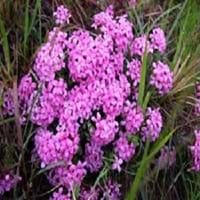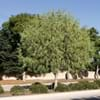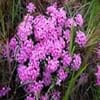Life Span
Perennial
Annual and Perennial
Type
Broadleaf Evergreen
Broadleaf Evergreen
Origin
Australia
Europe, Southern Europe
Types
Bigleaf hydrangea, Hortensia, Smooth hydrangea, Oakleaf hydrangea, Annabelle
Not Available
Number of Varieties
Not Available
Habitat
Forest edges, Hillside, Woods
gardens, Homesteads, Moist Soils, tropical environments, tropical grasslands
USDA Hardiness Zone
9-11
5-7
AHS Heat Zone
Not Available
10 - 1
Sunset Zone
21,22
Zone 1A
Habit
Oval/Rounded
Prostrate/Trailing
Flower Color
White, Ivory
Pink, Rose
Flower Color Modifier
Bicolor
Bicolor
Fruit Color
Not Available
Brown
Leaf Color in Spring
Green, Dark Green
Dark Green
Leaf Color in Summer
Green, Dark Green
Dark Green
Leaf Color in Fall
Green, Dark Green
Dark Green
Leaf Color in Winter
Green, Dark Green
Dark Green
Leaf Shape
Oblovate
Ovate
Plant Season
Spring, Summer, Fall, Winter
Spring, Summer, Winter
Sunlight
Full Sun
Full Sun, Partial Sun
Type of Soil
Loam, Sand
Loam
The pH of Soil
Acidic, Neutral, Alkaline
Neutral
Soil Drainage
Well drained
Well drained
Bloom Time
Early Spring, Fall, Late Winter
Late Spring
Tolerances
Pollution, Drought
Not Available
Where to Plant?
Container, Ground
Container, Ground
How to Plant?
Seedlings, Stem Planting
Rooted stem cutting, Transplanting, Vegetative
Plant Maintenance
Medium
Low
Watering Requirements
Not Available
Average Water Needs, Does not require regular watering
In Summer
Xeric/Desert, Drought Tolerant
Drought Tolerant
In Spring
Moderate
Average Water
In Winter
Average Water
Average Water
Soil pH
Acidic, Neutral, Alkaline
Neutral
Soil Type
Loam, Sand
Loam
Soil Drainage Capacity
Well drained
Well drained
Sun Exposure
Full Sun
Full Sun, Partial Sun
Pruning
Remove damaged leaves, Remove dead branches, Remove dead leaves
Prune in early spring, Requires very little pruning
Fertilizers
All-Purpose Liquid Fertilizer
All-Purpose Liquid Fertilizer, fertilize in spring
Pests and Diseases
Red blotch
Aphids, Mealybugs, Scale
Plant Tolerance
Pollution, Drought
Not Available
Flowers
Insignificant
Showy
Flower Petal Number
Not Available
Single
Foliage Texture
Fine
Medium
Foliage Sheen
Glossy
Matte
Attracts
Bees, Flies
Birds, Butterflies
Allergy
Chest tightness, Diarrhea, Dizziness, Nausea, Vomiting
Not Available
Aesthetic Uses
Not Available
Beautification, Borders, Mixed Border, Showy Purposes, Used as an interior landscaping species, Used for decorating walls, fences, gates, hedges, etc.
Beauty Benefits
Not Available
Good for skin and hair
Edible Uses
Not Available
No
Environmental Uses
Air purification
Air purification, Amazing growth rate, Food for birds
Medicinal Uses
Fever, Kidney problems, Urinary tract problems
No Medicinal Use
Part of Plant Used
Flowers, Root
Flowers
Other Uses
Not Available
Garland, Showy Purposes
Used As Indoor Plant
Not Available
Yes
Used As Outdoor Plant
Yes
Yes
Garden Design
Feature Plant, Hedges, Screening, Wind Break, Shade Trees, Street Trees, Topiary, Bonsai, Espalier
Container, Groundcover, Rock Garden, Wall
Botanical Name
GEIJERA parviflora
DAPHNE cneorum
Common Name
Australian Willow, Wilga
Daphne, Garland Flower, Rose Daphne
In Hindi
Hydrangea
डाफ्ने गुलाब
In German
Hortensie
Daphne Rose
In French
Hortensia
Rose Daphne
In Spanish
Hortensia
Daphne Rose
In Greek
υδραγεία
Daphne Rose
In Portuguese
Hortênsia
Daphne Rose
In Polish
Hortensja
Daphne Rose
In Latin
Hibiscus
Daphne Rose
Phylum
Not Available
Magnoliophyta
Class
Not Available
Magnoliopsida
Order
Not Available
Malvales
Family
Rutaceae
Thymelaeaceae
Genus
Not Available
Daphne
Clade
Not Available
Angiosperms, Eudicots, Rosids
Tribe
Not Available
Not Available
Subfamily
Not Available
Not Available
Number of Species
Not Available
Not Available
Difference Between Australian Willow and Rose Daphne
If you are confused whether Australian Willow or Rose Daphne are same, here are some features about those plants to help you choose better. Many people think that these two plants have the same characteristics, but one can see Australian Willow and Rose Daphne Information and learn more about it. Fertilizers required for proper growth of Australian Willow are All-Purpose Liquid Fertilizer, whereas for Rose Daphne fertilizers required are All-Purpose Liquid Fertilizer and fertilize in spring. Hence, one should know the basic difference between Australian Willow and Rose Daphne if you are planning to have them in your garden to enhance its beauty.
<
Flowering PlantsImportance of Australian Willow and Rose Daphne
Want to have the most appropriate plant for your garden? You might want to know the importance of Australian Willow and Rose Daphne. Basically, these two plants vary in many aspects. Compare Australian Willow and Rose Daphne as they differ in many characteristics such as their life, care, benefits, facts, etc. Every gardener must at least have the slightest clue about the plants he wants to plant in his garden. Compare their benefits, which differ in many ways like facts and uses. The medicinal use of Australian Willow is Fever, Kidney problems and Urinary tract problems whereas of Rose Daphne is No Medicinal Use. Australian Willow has beauty benefits as follows: Not Available while Rose Daphne has beauty benefits as follows: Not Available.
Compare Facts of Australian Willow vs Rose Daphne
How to choose the best garden plant for your garden depending upon its facts? Here garden plant comparison will help you to solve this query. Compare the facts of Australian Willow vs Rose Daphne and know which one to choose. As garden plants have benefits and other uses, allergy is also a major drawback of plants for some people. Allergic reactions of Australian Willow are Chest tightness, Diarrhea, Dizziness, Nausea and Vomiting whereas of Rose Daphne have Not Available respectively. Having a fruit bearing plant in your garden can be a plus point of your garden. Australian Willow has no showy fruits and Rose Daphne has no showy fruits. Also Australian Willow is not flowering and Rose Daphne is not flowering . You can compare Australian Willow and Rose Daphne facts and facts of other plants too.




